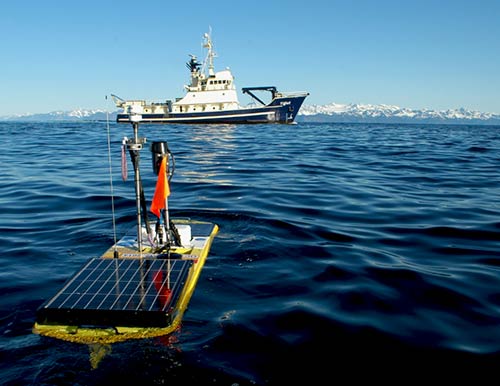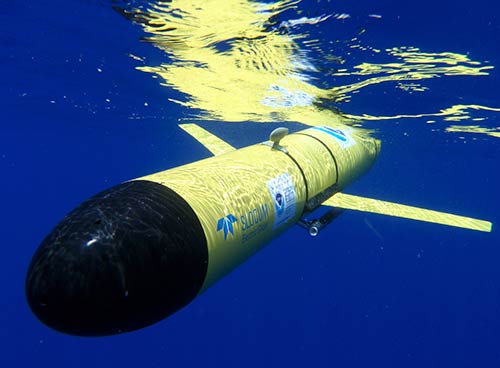
Scientists study ocean acidification in Prince William Sound
July 11, 2014
The term “ocean acidification” describes the process of ocean water becoming more acidic as a result of absorbing nearly a third of the carbon dioxide released into the atmosphere from human sources. This change in ocean chemistry is making it difficult for marine organisms such as shellfish and corals to build and maintain shells and skeletons.
Scientists and crew aboard Alaska Maritime National Wildlife Refuge's M/V Tiglax are among NOAA's partners in research in Prince William Sound on ocean acidification. (Wiley Evans, NOAA's Cooperative Institute for Alaska Research at the University of Alaska Fairbanks)
Freshwater from glaciers is also low in carbon dioxide relative to marine waters. But when these waters enter the marine environment they quickly absorb carbon dioxide from the atmosphere to reach equilibrium, and this, in turn, contributes to increased acidity of the surface waters. Scientists teaming up from NOAA’s Pacific Marine Environmental Laboratory, the University of Alaska and the Alaska Ocean Observing System, noted that Prince William Sound has had conditions conducive to ocean acidification for several decades, sparse sampling hindered their understanding of glacial runoff and other processes that are affecting the ecosystem. Now new autonomous gliders, adapted by PMEL scientists, allow researchers to survey large areas of the ocean for months at a time. “Ships are incredibly expensive to operate so we may only get one or two chances a year to make an observation in a certain area,” Mathis said. “But with these new autonomous gliders, we can make thousands of measurements over several months.” Earlier this spring, scientists launched two Carbon Wave Gliders and a Slocum underwater glider into the Gulf of Alaska to collect data for five months.
The Slocum glider tracks ocean data down to 200 meters to help scientists understand the downstream effects of melting glaciers and how this may intensify ocean acidification. (Ben Allsup, Teledyne Webb Research)
The Slocum glider, which resembles a torpedo and was conceived by Douglas C. Webb, tracks ocean data down to 200 meters. It travels from a near shore ocean acidification buoy across the continental shelf and back. Scientists pilot the Slocum from PMEL as well. It provides data showing the downstream effects of melting glaciers and how freshwater changes the chemistry of the water column. This is the first time that these types of gliders have been used in the cold waters of Alaska.
On the Web:
Source of News:
|
||

